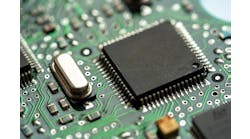Leslie Gordon is a former Senior Technical Writer on Control, Control Design and Industrial Networking magazines.
Depending on the application, you might use a standalone electrical software program when placing components in a panel or designing a wire harness. On the other hand, there are those who swear it's better to use programs that are integrated into computer-aided design (CAD) software—that is, perform electrical design and CAD mechanical design in parallel in an electrical CAD (ECAD) package.
On the relatively simple end of the spectrum in terms of use is Radica Software's Electra E7. "Electra is a plug-in for Microsoft Visio, so it requires very little training," says Radica founder and CEO Thomas Yip. "We based it on Visio, believing that a 3D-type model is not really necessary for electrical engineering because a panel layout is basically just a 2D diagram. Electra users just drag and drop smart symbols to place components in a cabinet and create wiring schematics."
According to Steve Sandberg, controls and applications engineer at Vickers-Warnick (vickers-warnick.com), Electra is simpler to use than full-blown CAD, but it has plenty of capability for the job at hand. "For example, a panel layout function places dimensioned virtual components on a virtual backplane. A library of pre-existing components reflect the sizes of their real-world counterparts, which helps you develop a layout that allows for proper component spacing. Electra also has intelligent functions that eliminate the need to perform manual operations. For instance, the PLC generator makes a usable component in about two minutes. You can directly attach wires to the component, and version E7 makes them look even better. Also, when you assign a wire number to a wire, that relationship is stored in a database. Connect that wire to any other wire and both wires will then share the same name, which saves lots of time tracking down wire naming issues. Also, you can drop a terminal symbol (small circle) on any wire. After completing a drawing, a special feature shows you a list of all the wires that have a terminal symbol. This can then be used to create a terminal block for your panels, again saving lots of time."
Also Read: ECAD Takes on the World
A different approach comes from ePlan Software & Services with software such as its Pro Panel and Electric P8. Pro Panel computer-aided engineering (CAE) software builds 3D assemblies that show the electrical and fluid configuration of control cabinets. Electric P8 is for documenting and managing automation projects, and it allows exchange of engineering data from other project areas via interfaces with the CAE software. These and the company's other standalone programs can work together via the ePlan platform's central, proprietary, database backbone.
"Users don't have to worry about having multiple projects out there for all the different functionalities they might undergo with regard to fluid or process components because everything is contained inside of one project database," says Paul Goleniak, professional services senior consultant at ePlan. "In fact, our database allows creating projects for individual machines, individual cabinets or an entire facility. The idea is ePlan can be used to create a complete facility diagram, from the power feeding the building down to the discrete I/O on the floor."
For example, Advanced Machine & Tool (AMT), which builds coils and winding equipment used in the production of electric motors, generators and alternators, found using ePlan solutions simplified product development steps like device tagging, wire numbering and machine design standardization. "EPlan tags devices and numbers wires automatically, generates error-free diagrams and BOMs, archives standard circuitry so we can re-use it from project to project, and integrates fluid schematics into the overall project, eliminating errors with device naming and missed components. This saved us about 23 to 28 work hours on one project alone," says AMT electrical engineer Mark Lohrman.
Meanwhile, AutoCAD Electrical works with 3D CAD, says Lee Hollingworth, senior product manager for AutoCAD at Autodesk. "True, mechanical and electrical are different disciplines, but most applications require that electrical components be positioned on mechanical structures. AutoCAD Electrical helps mechatronics and electromechanical engineers design wire harnesses, for instance, by initially showing a direct connection from pin to pin. Using the routing tools, they can then direct the individual wires to follow a predefined route and group wires into a harness. The software creates a fully dimensioned, 2D harness nailboard diagram for manufacture. Including electrical components into the 3D CAD model helps users avoid clashes, measure clearances and get accurate length information after routing wires and harnesses in the model."
Likewise, at Siemens Energy, Todd Hall, manager of the drafting and design department, says, "We have one engineer dedicated to mechanical, while six individuals focus mostly on electrical. They can all share designs using Autodesk Vault CAD data management software. We create our schematics and layout in AutoCAD Electrical, along with a mechanical model in Inventor CAD software. In one project, we exported the wires from electrical into the Inventor model, which gave us a 3D wire-linked capability that, along with some software I built, created a wire list for the shop floor, where the wires will be cut to length, prints the wires with data telling where they'll go, and places loads on each end. This has turned what used to be an eight-hour panel job into a four-hour task because the wire personnel are handed all the information they need to know up front."
Finally, at the far end of the spectrum, some users even enter the finite element analysis (FEA) realm to make sure that panel components don't overheat, adds Goleniak of ePlan. Rittal, a sister company, provides a variety of different panels at ePlan's data portal. It also supplies software, Rittal Therm, that allows users to input data from the parts mounted inside the panel and perform a calculation on the heat consumption in the panel. EPlan uses that data to identify the size of fans needed. EPlan and Pro Panel can also perform calculations on the panel components when the bill or materials is created. They identify heat consumption or power dissipation and heat dissipation within the panel.

Leaders relevant to this article:




